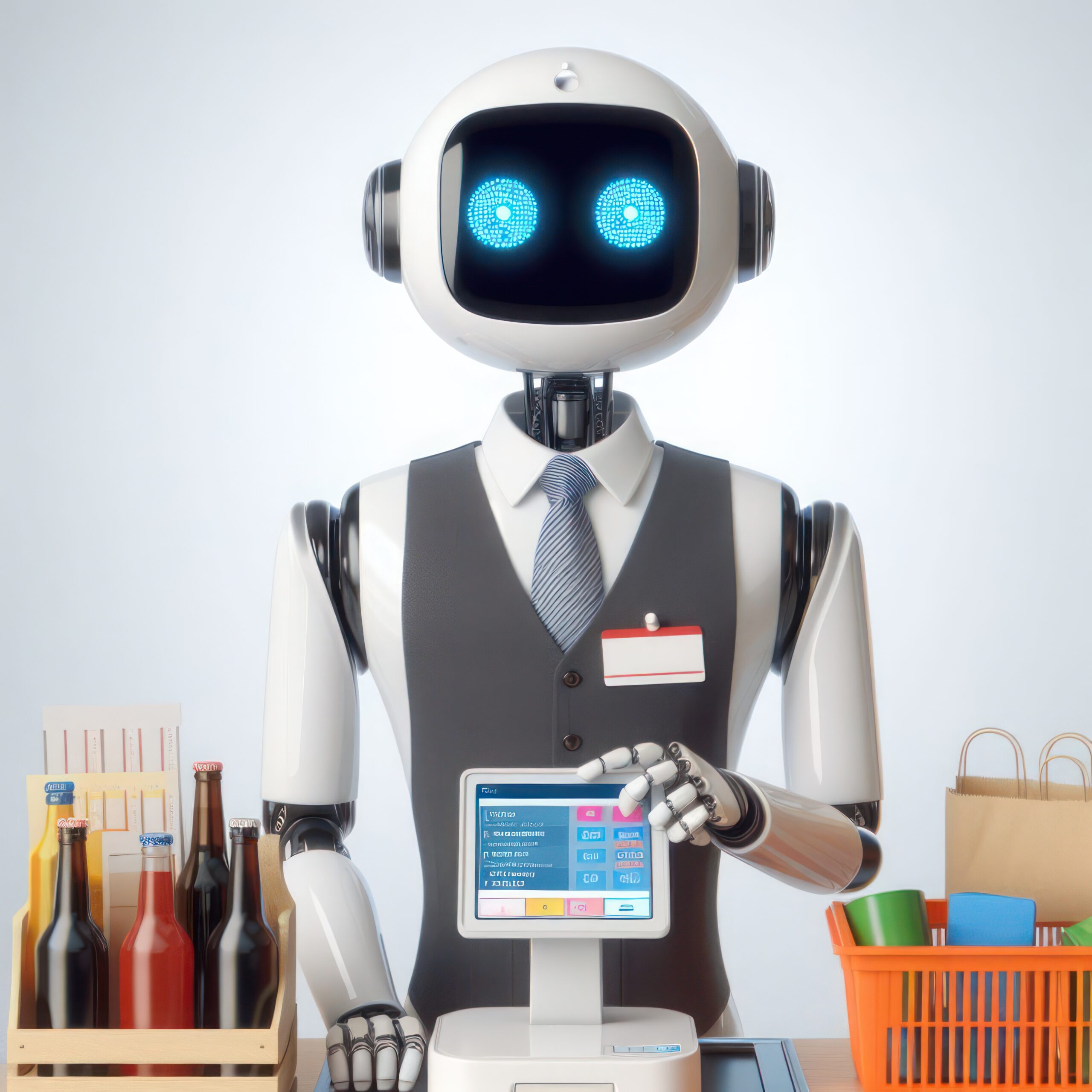AI-Powered Tools Revolutionizing E-commerce
If you think that ChatGPT is the only way to use AI on your e-commerce store, then you’re already 12 months behind every other e-commerce entrepreneur. Worse yet, if you aren’t even using AI to help you grow and scale your store, my guess is that you’re pouring hours and hours of hard work and money into your business, and you’re not getting the results that you want. Lucky for you, you found this article, and your life is now about to change.
Over the last 12 months, hundreds, if not thousands, of developers have been busily building AI-powered tools on top of platforms such as OpenAI and Google Gemini. I’ve been watching them very closely and personally testing hundreds of different apps on my e-commerce store, alongside the members of my e-commerce academy, to try and find the absolute best AI tools for e-commerce.
I’ve tested different tools that help create product descriptions, edit images, create videos, create ads, create ad copy, tie to Google Sheets, analyze data, and even tools that are human-like and directly interact with my customers, offering support when I’m not there. It’s like having someone that’s on 24/7.
I’ve tested so many different apps that I think I’m going a little bit crazy, and maybe I’m becoming an AI myself! But I’ve done this on the mission to find the apps that we’ve all been looking for, and I have been able to whittle it down to five AI-powered tools that every e-commerce entrepreneur needs to know about if they want to grow their store, save themselves time, and make more money online.
We strongly recommend that you check out our guide on how to take advantage of AI in today’s passive income economy.
Table of Contents
1. AI PRM: The Ultimate Chrome Extension for ChatGPT
The first AI-powered tool is a free Chrome extension that has been my go-to ever since ChatGPT was released. As much as I love ChatGPT, these sorts of tools really level us up when it comes to using AI and interacting with these AI chatbots, taking ChatGPT from being awesome to absolutely amazing.
The tool I’m talking about is called AI PRM, and it’s a free extension that you install directly into your Chrome browser. Once installed, it augments ChatGPT with hundreds and thousands of different prompts that you can use. The cool thing is that because there’s a community around this tool, they can vote on which prompts are working and which are really useful.
AI PRM has all these predefined prompts for you, so you don’t need to do any prompt engineering or write long, complicated prompts. It’s done them all for you. You can sort by the types of prompts you’re looking for, such as SEO, image generation, or keyword strategy. The tool sets up the prompt for you, saving you time and effort while delivering incredible results.
2. Creatify: Generate Video Ads in Minutes
The second AI-powered tool absolutely blew my mind when I first saw it. It literally cut down the time it takes to create video ads from hours to minutes. Better yet, I don’t need to film any video, write any scripts, or even edit any videos. All I need to do is paste the link of the product that I want to advertise into this tool, and it does all of that for me.
This tool is called Creatify, and it’s a URL-to-video maker. You simply paste in a link to your product, and it goes to the URL, pulls in all the data, product descriptions, and images for that product. You can choose the images you want to use, and then it creates a script in preparation for the video.
Creatify gives you different script options, such as a Gen Z version, three reasons why, a music starter, or story time. It takes the product description and writes it in the form of a video script that someone might read out on camera. But here’s where it gets fun: it then applies that script to an AI-generated avatar and creates these ads for you.
You can change the avatar, choosing from a wide variety of options, and you can also change the voice. Creatify is a game-changer for creating video ads quickly and easily, saving you time and money while delivering professional-looking results.
3. Shopify Magic: AI-Powered Tools Built into Your E-commerce Platform
The third AI-powered tool is where we’ve seen AI baked into a platform that we use every single day. We’re going to be seeing this more and more – the tools, software, or apps that we use daily are going to have AI inside them, which means we won’t have to jump between two or three tools to get the job done.
This is where Shopify Magic comes into play. Shopify Magic is directly within the Shopify platform, and there are two main ways we can use it. The first is to edit images. With the enhanced background option, you can remove or replace the background of your product images directly in Shopify, without needing to use other apps like Canva or Photoshop.
The second option is the ability to create product descriptions. Directly in Shopify, you’ve got the “generate text” feature, where you can put in a small amount of detail, and it will create a big description for you. You can choose the type of tone you want, such as expert, daring, playful, sophisticated, or persuasive, and it will generate descriptions for you directly in the platform.
The good thing about Shopify Magic is that it’s directly in the platform already, and you don’t need to pay any extra. You just need to have Shopify, and we’re going to see Shopify Magic get better and better over time.
4. Tidio: AI-Powered Customer Service Chatbots
The fourth AI-powered tool I have talked about before on this channel, in our chatbots video. I talked about the improvement in the way AI and chatbots are working together and the fact that we can use AI as a customer service tool.
The tool we’ve been testing out is pretty epic because it means that I don’t need to hire a big customer service team to manage the live chat of my store and give support to my customers. My customers don’t even realize they’re talking to a bot half the time because the information that we give it is so good that it gives it back to them in real-time, sounding like humans and being really accurate and specific to the products that we sell.
The tool is called Tidio, and it’s a well-known chatbot, but they’ve installed a little AI module which they call Lero. The way it works is that we have to feed Lero with knowledge, which is made up of data sources. We’ve filled Lero with all the pages on our store, such as frequently asked questions, sizing information, blogs, and articles. We’re feeding it with anything that could help our customers.
When someone asks a question in the chatbot, it’s going to grab this knowledge base, turn it around into a response, and feed it back to the customer. It gives accurate, relevant responses to our store, which means we can have an AI chatbot do all the grunt work for us when it comes to customer service.
5. Hey Jen: Create AI Avatars and Videos
The final AI-powered tool is absolutely going to blow your mind. It’s the sort of thing that you think about when people talk about AI – think deep fakes, video editing, translation, and avatars. This is all the things that AI has promised to be, and it actually is, and you get direct access to it.
It’s called Hey Jen, and it allows you to create AI avatars to pretty much do anything that you want. It even allows you to create an avatar of yourself, so you can make yourself do anything that you want.
One example is translating videos into different languages. I uploaded a video of me speaking English directly into Hey Jen, and it translated it into Japanese for me. This means that we can create videos and have the ability to sell truly globally and speak in the same language as the people we’re selling to. The opportunities here are phenomenal.
The final example is really going to change everything. It means I can go on holiday and drink piña coladas, and I can have AI avatars uploading videos into YouTube for me. All I have to do is upload an existing YouTube video, use that as my avatar, and create any type of video that I want.
It’s not perfect yet, but we can really see where this is going. If I just upload a couple of different avatars to it and write some scripts, it’s going to be able to generate the videos for me, and I’m not even going to have to stay here and record all these videos. It is absolutely nuts.
Conclusion
These are the AI-powered tools that we’re using right now to really push AI, and I reckon in about 12 months, these tools are going to be 10, 20, if not 100 times better than they already are. I’d love to hear from you – what are the tools that you’re using? What ones did you love about this article? Is there something I should be looking out for that I don’t even know about yet?
If you can comment down below what you think about AI, where it’s going, and tools that you’re interested in, I’d love to hear about that. And for those of you that haven’t done it yet, and I’m sure you have during this article, please make sure you get the checklist because I talk about all the AI-powered tools in there, and I’ll continually update that checklist over time.
AI is revolutionizing the e-commerce landscape, and these five AI-powered tools are just the beginning. By leveraging the power of AI, you can save time, increase efficiency, boost sales, and take your online store to the next level. Don’t get left behind – start implementing these game-changing AI solutions today and watch your business soar!
FAQ
What are AI-powered tools?
AI-powered tools are software applications or platforms that leverage artificial intelligence technologies to perform tasks, generate content, or provide insights. These tools utilize machine learning algorithms, natural language processing, computer vision, and other AI techniques to automate processes, enhance decision-making, and deliver intelligent solutions.
In the context of e-commerce, AI-powered tools can help entrepreneurs and businesses streamline their operations, create engaging content, personalize customer experiences, and optimize various aspects of their online stores. These tools can range from chatbots and product recommendation engines to image editing software and ad creation platforms.
What are the most used AI tools?
Some of the most widely used AI tools include:
- ChatGPT: A powerful language model developed by OpenAI, used for generating human-like text, answering questions, and assisting with various tasks.
- Google Analytics: An AI-enhanced web analytics service that provides insights into website traffic, user behavior, and marketing effectiveness.
- Hootsuite Insights: An AI-powered social media management platform that helps businesses monitor their social media presence, analyze performance, and engage with their audience.
- Grammarly: An AI-based writing assistant that helps users improve their grammar, spelling, and overall writing quality.
- Salesforce Einstein: An AI-powered CRM platform that offers predictive analytics, personalized recommendations, and automated customer service.
These are just a few examples of the many AI tools available, and the list continues to grow as more businesses adopt AI technologies to enhance their operations and customer experiences.
What is an example of an AI tool?
One example of an AI tool is Creatify, which is mentioned in the article. Creatify is an AI-powered video ad creation platform that allows users to generate professional-looking video ads in minutes. By simply pasting a link to a product, Creatify pulls in the relevant data, product descriptions, and images, and creates a video script based on the information provided.
Users can then customize the video by selecting the desired avatar, voice, and other settings. Creatify uses AI to generate the final video ad, saving users time and effort while delivering high-quality results. This is just one example of how AI tools can streamline processes and help businesses create engaging content more efficiently.
Is ChatGPT an AI tool?
Yes, ChatGPT is an AI tool. Developed by OpenAI, ChatGPT is a large language model trained on a vast amount of text data. It uses deep learning techniques to generate human-like responses to text-based prompts.
ChatGPT can be used for a wide range of applications, such as answering questions, generating content, providing recommendations, and even helping with problem-solving. Its ability to understand context and provide coherent, relevant responses makes it a powerful tool for businesses and individuals alike.
In the e-commerce context, ChatGPT can be leveraged to create product descriptions, generate blog posts, answer customer inquiries, and more. As mentioned in the article, tools like AI PRM extend ChatGPT’s capabilities by providing predefined prompts and templates, making it even easier for users to generate high-quality content tailored to their specific needs.
We strongly recommend that you check out our guide on how to take advantage of AI in today’s passive income economy.




